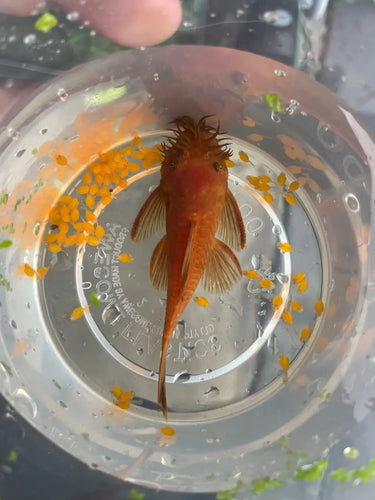
Bristlenose Plecos, also known as Ancistrus sp., are a type of small freshwater fish native to South America. They are popular among aquarium enthusiasts due to their hardy nature and ability to clean algae from tank walls and decorations. Bristlenose Plecos are also relatively easy to breed, making them a good choice for hobbyists who are interested in breeding fish.
If you're considering breeding Bristlenose Plecos, there are a few things you should keep in mind.
First, it's important to have a separate breeding tank. Bristlenose Plecos are territorial and may become aggressive towards one another if they are kept in the same tank. A separate breeding tank will also allow you to more easily monitor the breeding process and care for the fry (baby fish).
Next, you'll need to choose a suitable pair of Bristlenose Plecos. It's best to choose a male and female that are both healthy and of similar size. If you're not sure how to tell the difference between male and female Bristlenose Plecos, a male will typically have longer and thicker bristles on its head, while a female will have shorter, thinner bristles.
Once you have your breeding tank set up and your pair of Bristlenose Plecos chosen, you'll need to provide them with the right environment to encourage breeding. Bristlenose Plecos prefer a tank with plenty of hiding places, such as caves or PVC pipes. They also prefer a tank with a soft substrate, such as sand or fine gravel. It's also important to maintain a consistent water temperature and pH level in the tank.
When the conditions are right, the female Bristlenose Pleco will lay a batch of eggs on the underside of a flat surface, such as a rock or piece of driftwood. The male will then fertilize the eggs and guard them until they hatch. This process can take anywhere from 5-10 days, depending on the water temperature.
Once the eggs hatch, the fry will be small and vulnerable. It's important to keep the breeding tank clean and maintain a stable environment for the fry. They will typically start feeding on algae and other small foods within a few days of hatching. As they grow, you can gradually introduce them to a wider variety of foods, such as brine shrimp and commercial fry food.
Breeding Bristlenose Plecos can be a rewarding experience for hobbyists. It's a great way to learn more about these fascinating fish and to contribute to the hobby by producing healthy, well-cared-for offspring. With a little planning and patience, you can successfully breed Bristlenose Plecos and watch your fry grow and thrive.



